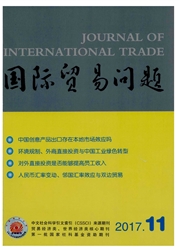

 中文摘要:
中文摘要:
本文通过修正的非抛补利率平价模型设立资本流动管理政策指标,建立DSGE模型比较不同汇率制度下的中央银行政策组合及福利损失。研究结果表明:相比资本完全自由流动,对资本流动进行管理有利于央行降低福利损失;同时采用货币政策、汇率政策以及资本流动管理"三位一体"的政策组合带来的福利效应始终优于其他政策实行方案。因此,存在这样一条中间路径,即同时采用管理浮动汇率制与资本流动管理二者相结合的宏观政策组合,从而在维护经济和金融稳定发展的前提下,有序推进人民币的国际化改革。
 英文摘要:
英文摘要:
By adding portfolio adjustment costs, this paper built a DSGE theoretical model with monetary policy, exchange rate and capital flow management to discuss the welfare loss of central bank under different exchange rate regimes.It comes to the following conclusions: firstly, the central bank could reduce its welfare loss by the management of capital flow instead of the capital flow liberalization; secondly, it is the optimal choice for central bank to imply monetary policy, exchange rate policy and capital flow management policy at the same time.Therefore, at the present stage, China should imply the combination of the three policies above to accelerate the Renminbi internationalization.
 同期刊论文项目
同期刊论文项目
 同项目期刊论文
同项目期刊论文
 期刊信息
期刊信息
